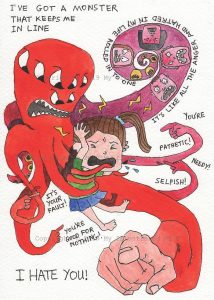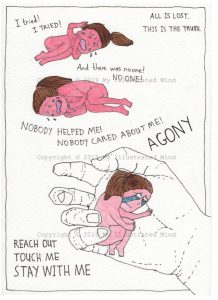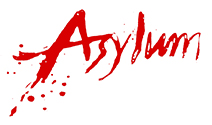In 2016, I was a GP trainee and had a PhD under my belt. My husband and I were thinking about buying a place of our own and starting a family. I was 29 years old. I couldn’t have been more wrong.

At the beginning of the year I took some time off to ‘sort myself out’. I knew I wasn’t happy but, moreso, I had developed increasingly severe physical problems, including abdominal pain and vomiting. These had begun to affect my attendance at work. Little did I know that this three-month period of sick leave would turn into over three and half years.
I started talking therapy and it triggered an exponential decline. Ugly truths about my past began to reveal themselves, and the world as I knew it turned upside down. It was a very dark time, and like many, I was repeatedly let down, and even re-traumatised, by mental health services – both in the NHS and private sector. But with the floodgates finally open, I took pen to paper in every waking moment that I could muster the energy. Feverishly I wrote, pages filled with agony and confusion. Writing helped, but it wasn’t enough. After two years, my words became pictures. It felt like a way out, and I followed.

Drawing made the intangible concrete. It gave me a means to capture the complexity, chaos, and intensity of my emotional experiences in a way that made me feel heard for the very first time. This enabled me to communicate more powerfully with myself – and with others. It was transformational.
Through drawing, I was able to visualise the often intense and overwhelming emotional states that I experienced, as different sides of myself: an Octopus (self-criticism), a Snow Leopard (mistrust), a Black Stallion (healthy side) and Little me (vulnerability). This brought about a step change in my understanding of myself. It helped me figure out what I was experiencing and when, why I experienced it, where it originated from, and what the function of these things were in my life – An Illustrated Mind Kathryn Watson what they made me think, feel and do. This deep level of understanding was so important, because it opened the door to self-compassion. In doing so, it helped me begin to heal.

Seeing Little me cowering at the wrath of the Octopus or broken with the weight of invalidation, helped me develop a sense of wanting to care for and protect myself. It helped me begin to acknowledge the pain, express it, and want to do something about it.
Communicating with myself in this way also helped me figure out what was truth and what was not. I was able to see that the Octopus and Snow Leopard were not intrinsically part of me; I wasn’t born with them. They came into existence as a response to how I was treated. This helped me realise that they weren’t the truth – neither what they said, nor how they made me feel. Realising this helped me accept that it wasn’t my fault and these things did not represent my core self. Knowing this helped me start to see that I wasn’t flawed, but a good person just trying to survive. It helped shift feelings of self-loathing.

Most important of all, was the ability this new means of communication gave me to connect; to begin to form a relationship with these different sides of myself. This came from understanding motivation – why the Octopus and Snow Leopard made me think, feel and do certain things. For example, I came to understand that the Snow Leopard was in fact my best friend and my protector. Although it angrily pushed love, warmth, understanding and empathy away, perpetuating my feelings of invalidation and hopelessness, it only did so because it didn’t want me to get hurt. Its intentions were only good. Understanding this opened up the opportunity for dialogue. It introduced hope.
Author: Dr Kathryn Watson / www.myillustratedmind. com / twitter @myillumind / instagram @ myillustratedmind
